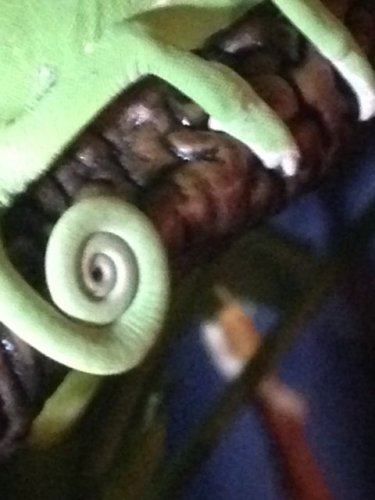sharksfan11
New Member
Hi all,
I've been stalking this website now for a couple of weeks as I decide whether or not a chameleon is for me. I have been bugging a bunch of people and doing a bunch of research, but I still have some questions. This is where you guys come in.
1) Is there really a difference between Veiled vs Panther for first time owners? I've been getting mixed reviews. I know neither should be handled often, but I've read that Panthers are a little more accepting of human contact.
2) Are Panthers always colorful once they reach 18 months? or are they a brown color unless stressed/excited/experience a temperature change?
3) As far as night time heating, do I have to have a 3rd light, or is there another way to keep him warm at night? We live in Northern CA, but don't leave the heater on at night, so he will need some kind of heat for sure. I'm just wondering if I can get away with not doing a 3rd light. Also I've seen that there are two kinds of light- black or red. Which is better?
I think that's all for now, but I'm sure there will be more.
Thanks in advance.
----
2 RES- Nibbler & Sheldon
Hopefully a future Cham- Reptar
I've been stalking this website now for a couple of weeks as I decide whether or not a chameleon is for me. I have been bugging a bunch of people and doing a bunch of research, but I still have some questions. This is where you guys come in.
1) Is there really a difference between Veiled vs Panther for first time owners? I've been getting mixed reviews. I know neither should be handled often, but I've read that Panthers are a little more accepting of human contact.
2) Are Panthers always colorful once they reach 18 months? or are they a brown color unless stressed/excited/experience a temperature change?
3) As far as night time heating, do I have to have a 3rd light, or is there another way to keep him warm at night? We live in Northern CA, but don't leave the heater on at night, so he will need some kind of heat for sure. I'm just wondering if I can get away with not doing a 3rd light. Also I've seen that there are two kinds of light- black or red. Which is better?
I think that's all for now, but I'm sure there will be more.
Thanks in advance.
----
2 RES- Nibbler & Sheldon
Hopefully a future Cham- Reptar



